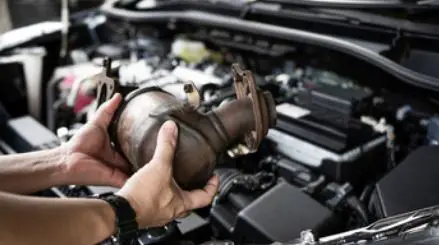Your car’s engine’s internal combustion process causes the release of many gasses. Fortunately, cars’ exhaust systems are equipped with catalytic converters whose primary function is to remove toxicity in the emitted gasses. Therefore, these gasses may not harm the environment or cause health complications for people. Notably, the device allows your car engines to run efficiently and achieve favorable mileage. Keep reading for valuable tips on how to care for your car’s catalytic converter.
Keep it Clean
Most motorists only realize the need to clean their car’s catalytic converter once it gets clogged. The last thing you’d want is a clogged catalytic converter since it can weaken your engine performance and degrade fuel economy. Even worse, toxic gas emissions are a danger to the environment. Therefore, you need to keep it clean all the time.
Here is a simple step-by-step process for cleaning your catalytic converter;
- Detach it from your car by loosening the bolts. Keep the bolts safe because you’ll need them to fit back into the car.
- Using a pressure washer, clean the debris and any dirt accumulated in the device. Wash the inlet and outlet pipes and if the dirt is stubborn, use a degreaser and hot water.
- Allow the catalytic converter to dry, and install it back in place using a wrench.
Check For Damage
Catalytic converters can last up to 10 years or more with good maintenance. However, they can be contaminated and physically damaged, leading to an engine shutdown. You need to watch out for common catalytic problems to be sure it’s not damaged.
Some potential problems you can encounter include sluggish engine performance, dark exhaust smoke, reduced acceleration, excess heat under the car, and the smell of rotten eggs or sulfur from the exhaust. Contact your mechanic if you notice these problems for diagnosis and urgent replacement.
Protect Against Theft and Take Out Catalytic Converter Theft
Catalytic converter thefts have skyrocketed by 325% in recent years. A catalytic converter is fitted on the underside of your car and is, therefore, vulnerable to theft.
You can protect against theft by etching your VIN to the catalytic theft, which makes it identifiable. Also, always park your vehicle in well-lit areas and set the alarm. Also, install an anti-theft device to deter thieves.
Probably you are asking yourself this question; does insurance cover catalytic converter theft? Yes, if you have comprehensive auto coverage, you could be protected against theft, repair, and damage. Be sure to contact your policy provider to understand the extent of your auto coverage.
Other Tips
Besides checking for damage and cleaning your car’s catalytic converter, the following simple precautions are necessary to keep it in good condition.
- Pay attention to the lights on your car’s dashboard because this could signal an underlying problem with the catalytic converter. Investigate any warning lights and have your vehicle checked.
- Use the correct oil and fuel for your vehicle.
- Don’t use fuel additives before reading instructions.
- Refrain from bumping or tow-starting your vehicle, as this can inject unburned fuel into your catalytic converter.
- Don’t tow heavy items like an overweight caravan, as it can cause unburned fuel to get into the exhaust system.
- Take your car for regular servicing to check, even if its engine is running well.
- Take care when driving or parking your car on heavy snow or long grass.
- Stay away from deep fords and puddles.
Conclusion
As noted, a catalytic converter is integral to a car’s emission control system. It helps to reduce the number of harmful pollutants released into the environment. However, it can also be a costly repair if it becomes damaged or needs to be replaced. You can use the above tips and save some money on car maintenance.
Go Home






